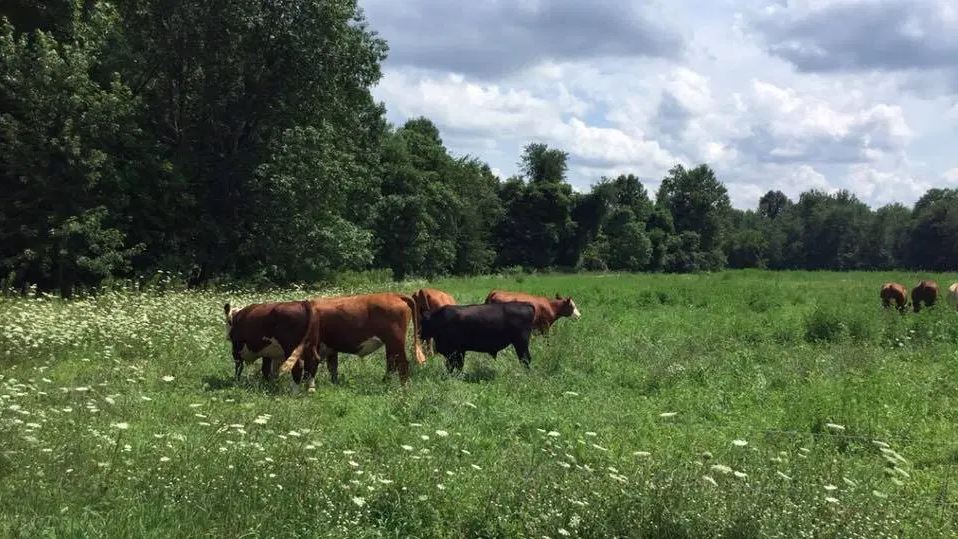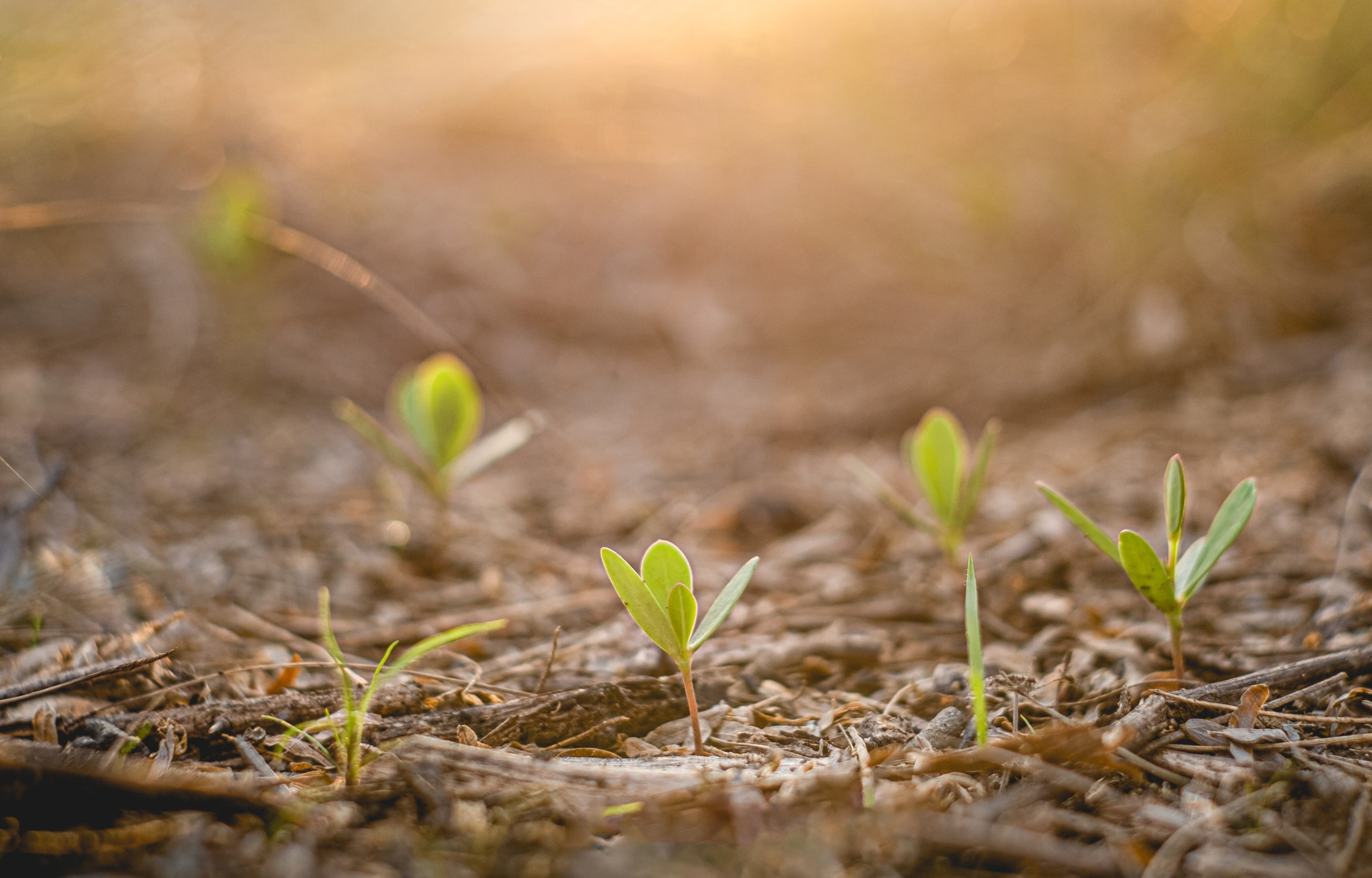
Since Normanton Farms signed a 99-year lease with New Hampshire Agrarian Commons in 2021, its lead farmer, Steve Normanton, has been hard at work guiding his herd of around 50 cattle and large flock of chickens from pasture to pasture.
Rotational grazing is an exercise in balance and careful observation, requiring the farmer to time the movements of their herd around the life cycles of the grass and the decomposition of manure. If a plot of land is overgrazed, the soil can be polluted by excess manure. If it is not grazed at all, the grass loses the rich nutrients provided by manure and goes to seed, creating fibrous “lignified” organic matter that is less nutrient dense and difficult for cattle to digest.
When Steve first started Normanton Farms in 2009, the soil had been depleted by intensive farming and flooding on the banks of the Merrimack River. The specific needs of the Litchfield land led Steve and his colleagues to place soil health at the center of their approach to land stewardship, one which has proved highly successful.
“We knew that our soil was lacking in nutrients, but also just lacking in organic matter, so our focus for the last 12 years was how to get more organic matter into the ground to increase our water-holding capacity,” said Steve. “And even though we’ve had some dry spells over the last 12 years, every year the water-holding capacity of soil has improved so that even in a year like last year, while our neighbor’s grass was browning up, ours was still green.”
Investing in the health of the soil is, for Steve, an investment in the land’s long-term capacity to sustain life. “The big picture is that life comes from the soil,” said Steve. “Healthy soil is going to produce a healthy life. Because of all these reasons—it’s got carbon-storage capacity, it’s got water-holding capacity.”“
As part of the Agrarian Commons, Normanton Farms has access to the stability and support necessary to make long-term investments in the health of the land. This is because the Agrarian Commons model is based on an active and robust model of land stewardship, rooted in the principles of interconnectedness and social justice. For Agrarian Trust, land stewardship isn’t about preserving an untouched “wilderness,” it is about engaging in the immense restorative potential of active, conscious use of the land.
The importance of the regenerative work being done by farmers like Steve Normanton cannot be overstated. Soil is the land’s primary means of converting cycling nutrients, regulating water, and sustaining life. It provides physical support for plants to endure heavy winds and rainfall, and the aerated structure for plants to effectively spread their roots through the ground. Soil can even filter human-created pollutants, transforming land destroyed by runoff and industrial waste into livable spaces. Proponents of carbon sequestration argue that soil’s capacity to remove and hold carbon from the atmosphere has the potential to play an important role in mitigating the effects of climate change.
Yet for farmers in the United States and worldwide, soil depletion continues to be a major issue. This spring, for example, dust storms swept across the Midwest, wreaking havoc on rural infrastructure, destroying crops, and leading to widespread soil loss. Agricultural land impacted by one storm lost between three and twelve tons of soil per acre. Climate change, over-tillage, drought, and a lack of cover crops have all led to the rapid loss of soil.
“We use farm land in this country so terribly that we’ve got this idea that we can’t feed the world. I think if the practices change, we could.”
Much of this soil loss is ultimately preventable, and even reversible. Members of the regenerative agriculture movement and associated projects have been outspoken critics of the conventional agriculture approach to soil, championing instead a low-till, responsible land stewardship centered around the active improvement of soil health. A compelling example of this kind of project is OpenTEAM, an open-source platform in which farmers, scientists, and other soil-health proponents share knowledge, and develop interoperable tools for soil management.
When a farmer signs an Agrarian Commons lease, they commit to a form of land stewardship that is rooted in a relationship of interdependence and co-responsibility with the Commons land. Ten percent of this land is set aside from agricultural production solely for the purposes of investing in the land’s ecosystem. Read through an Agrarian Commons lease, and you’ll see fungi, birds, water, and soil co-mingling with language committing to community, sustainability, and social justice. The Agrarian Commons isn’t just about producing food; in other words, it’s also about building a world in which humans and non-humans are seen as fundamentally interdependent. In certain leases, the rights of nature are specifically outlined. These include, but are not limited to, the right of nature “to be supported by healthy, living soil.”
Agrarian Trust is actively involved in the movement for soil restoration. Through the innovative Agrarian Commons model, Agrarian Trust provides farmers and communities with access to a legal and institutional framework necessary for ensuring that land is farmed according to an ecologically responsible and restorative model in perpetuity.
Steve Normanton takes this approach to land stewardship very seriously. As a rancher and safari guide living in South Africa, he remembers seeing herds of antelope sweep through the grasslands, leaving what looked like devastation in their wake. In reality, Steve learned, the antelope are an important part of the natural life cycle of the grassland.
Land stewardship isn’t about preserving an untouched “wilderness,” it is about engaging in the immense restorative potential of active, conscious use of the land.
Through grazing down the grass, grazers cause the grass to reproduce by sending runners, or “tillers” through the ground, allowing the ground to be covered by an uninterrupted mesh of grass. This mesh in turn provides a stable environment for a thriving soil ecosystem to develop. The manure left by the antelope fertilizes the soil, providing the grass with valuable nutrients. Steve emulates this process on his farm through rotating his herd’s grazing pasture, and leaving 50- to 60-day resting periods for the grass to recover.
“We try to mimic nature as much as possible,” said Steve. “It’s amazing, we’ve been on this earth for such a long time and we always feel, as the human species, that we somehow can control nature, but nature is so powerful.”
Steve also makes sure to leave plenty of space for natural systems to do their part on the farm. “What other people may think of as pests or nuisances, we allow,” Steve explained. “We’ve got groundhogs in big burrows under the ground, and yes, they can be dangerous because a cow can step in there and break their foot, but those creatures are creating airways under the soil. You’ve got wild turkeys, they help scatter the cow manure where the chickens can’t get. You’ve got coyotes and foxes that keep animal populations in check.”
Steve’s integrated approach to land stewardship has proved highly successful. When he first started the farm in 2009, Steve was only able to keep 30 cattle on the 32 acres of pasture for a two-week period. Now, he is able to keep around 50 cattle for a full season.
In addition to increasing his farm’s total output, Steve’s careful stewardship is an investment in the future of the land and planet. A land once depleted is now home to a rich layer of topsoil, groundhogs, birds, wild turkeys, beetles, worms, cows, chickens, foxes, and other creatures. Through the process of carbon sequestration, Steve’s land is removing carbon from the atmosphere, transforming the agent of climate catastrophe into a catalyst for thriving ecosystems.
The form of land stewardship that Steve practices at Normanton Farms is central to Agrarian Trust’s mission of transforming land tenure in the United States. Steve’s work shows that land stewardship isn’t just preserving “wilderness” through a policy of strict non-interference; it also involves the close cooperation of humans and their non-human partners. Through actively using the land, Steve enters into relationship with it, benefiting from the opportunity to produce nutritious food for human consumption, while actively restoring the ecosystem to its full and thriving potential.
“My goal is to set [Normanton Farm] up as an example of what things could be if they were managed responsibly,” Steve said. “Nobody talks about the fact that we use farm land in this country so terribly that we’ve got this idea that we can’t feed the world. I think if the practices change, we could.”




